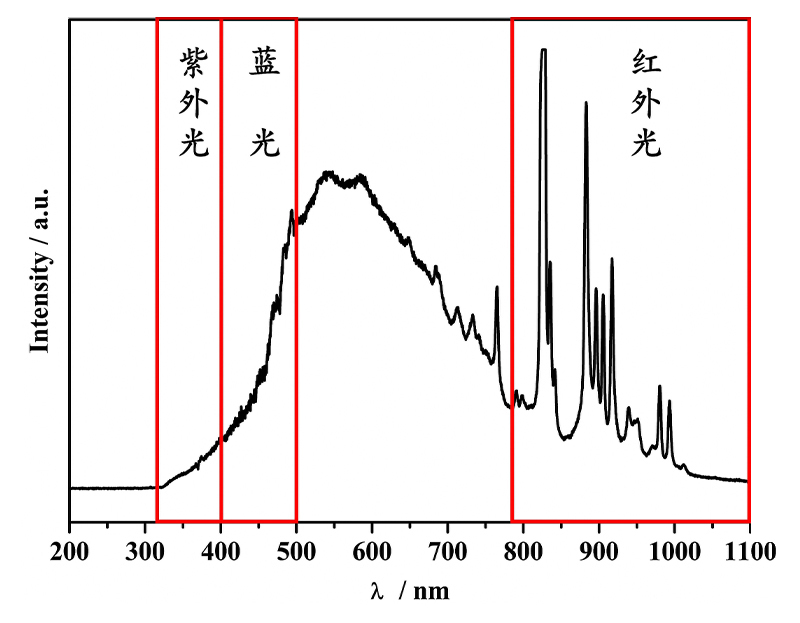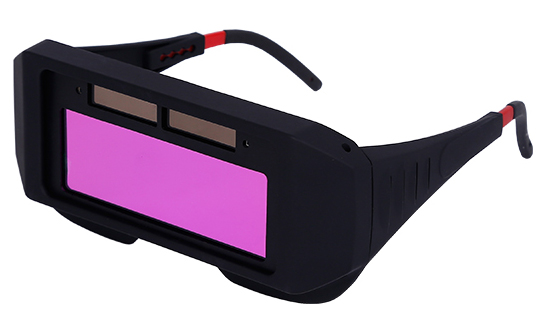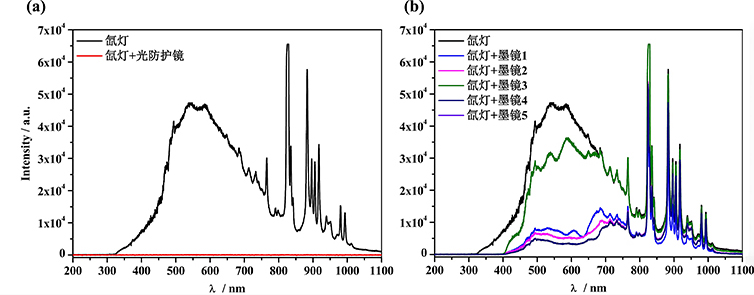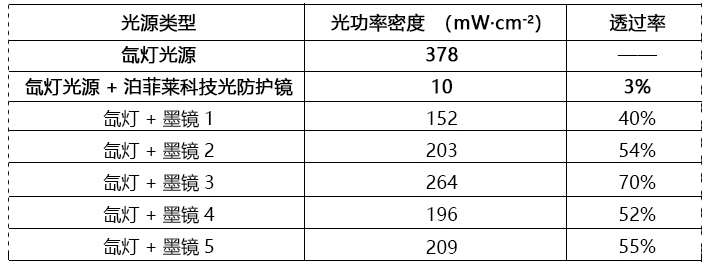In the laboratory, the xenon lamp light source emits a continuous spectrum of light, with the main emission band concentrated between 320 nm and 1000 nm. From Figure 1, we can see that the light that poses a threat to the human eye mainly includes ultraviolet light with wavelengths between 320 nm and 400 nm, blue light between 400 nm and 500 nm, and infrared light greater than 780 nm.

Figure 1. Xenon Lamp Light Source Emission Spectrum
The human eye has two natural defenses: the cornea, located at the front of the eye, serves as the first line of defense, and the lens is located behind the cornea. The cornea and lens absorb ultraviolet light, allowing visible and infrared light to be imaged on the retina. While the cornea and lens act as barriers against ultraviolet light, they are also at risk of damage and require special protection.
Laboratory Strong Light Protection - Ultraviolet Light Hazard
Ultraviolet light with wavelengths between 320 nm and 400 nm can cause damage to and necrosis of the corneal conjunctival epithelial cells, leading to acute corneal conjunctivitis caused by ultraviolet light and even cataracts. Additionally, ultraviolet light can cause phosphorus ions in the lens to combine with calcium ions in the aging lens, leading to the calcification or hardening of the eye lens. This results in protein denaturation and opacity, reducing the lens's ability to transmit visible light and thus causing vision impairment.
Laboratory Strong Light Protection - Blue Light Hazard
The blue light portion of visible light refers to light with wavelengths between 400 nm and 500 nm. Blue light has the highest photon energy in visible light and can penetrate the lens directly to reach the retina, causing atrophy or death of retinal pigment epithelial cells. The death of photosensitive cells can lead to vision loss or even complete blindness. This damage is irreversible, and high-intensity blue light has a much greater impact on the human eye's retina compared to near-infrared light. Additionally, blue light can lead to macular degeneration, and the lens in the human eye absorbs some blue light, gradually becoming cloudy and forming cataracts.
Laboratory Strong Light Protection - Infrared Light Hazard
The reason that infrared light with wavelengths greater than 780 nm harms the eyes is that the eyeball contains a large amount of liquid, and this liquid has an absorbing effect on infrared light. It can convert infrared light into thermal energy, raising the temperature inside the lens. When the temperature inside the lens exceeds a certain limit beyond body temperature, various protein components in the lens undergo denaturation and coagulation, leading to cataracts.
To reduce the harm caused by xenon lamp light sources to the eyes of laboratory personnel, Perfectlight Technology has introduced the Perfectlight Technology Eye Protection Glasses, which effectively prevent damage to the eyes from intense light and ultraviolet light.

Figure 2. Perfectlight Technology Eye Protection Glasses
Comparing the light protection effectiveness of Perfectlight Technology Eye Protection Glasses with regular sunglasses available on the market, at the same irradiation distance, the spectral distribution and optical power density of xenon lamp light passing through Perfectlight Technology Eye Protection Glasses and regular sunglasses were tested.

Figure 3. Comparison of Protection Effectiveness Between Perfectlight Technology Eye Protection Glasses and Regular Sunglasses
As shown in Figure 3 (a), Perfectlight Technology Eye Protection Glasses provide full-spectrum protection against light between 320 nm and 1000 nm, demonstrating significant protection effectiveness.
However, as seen in Figure 3 (b), regular sunglasses only offer protection against ultraviolet light within 400 nm, with minimal protection against blue and infrared light, primarily reducing their intensity without significant protection.
From the data in Table 1, it can be observed that the transmittance of Perfectlight Technology Eye Protection Glasses is only 3%, indicating significant protection effectiveness. In contrast, regular sunglasses have a transmittance ranging from 40% to 70% and provide no noticeable protection against strong light.
Table 1. Comparison of Protection Data Between Perfectlight Technology Eye Protection Glasses and Regular Sunglasses

Perfectlight Technology Eye Protection Glasses feature an adjustable design with soft legs for a comfortable fit, suitable for use by different laboratory personnel. They also have side ventilation for effective airflow and matte treatment on the forehead to prevent glare and reflections, offering excellent resistance to strong light impact.